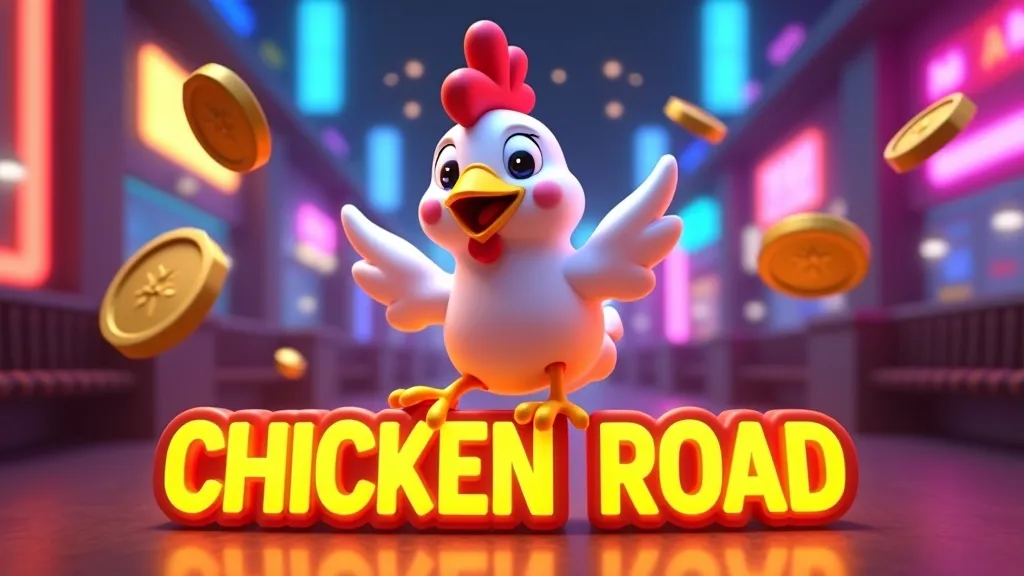Chicken Road Game: A Practical Player’s Handbook
If you’re curious about fast, tactile gameplay with real suspense, this
guide is for you. The premise is simple: you make careful moves, weigh
risk, and press for profit without overreaching. Along the way, you’ll
learn how to pace yourself, read the flow of a round, and stop at the
right moment. You’ll also see where chicken road game shines, how a
chicken road casino frames the action, and what to watch for before
you stake a single peso.

How the Core Gameplay Works
The heart of this title is momentum: each safe step feels like a small win that tempts the next. You choose your path, judge your risk, and decide when to bank your gains. Because the rounds are brisk, it’s easy to play a lot in a short window, which makes discipline essential. Bankroll control matters just as much as intuition, and a clear stop rule keeps the fun from turning frantic. In short, chicken road rewards patience, timing, and a cool head, and even seasoned chickenroad fans keep their early moves conservative.
Mechanics, Risk, and Flow
Each round starts simple: take one step, evaluate the board, and decide what the next safe move might be. The reward escalates with distance, but so does the pressure that pushes players into reckless choices. Strong players learn to treat early steps as information, not income, and they cash out whenever the board feels “off.” Bankroll segments help: divide your PHP into equal portions, and never let one portion sink the whole session. If you feel tilt creeping in, switch to micro-stakes for a few rounds to reset your rhythm. Track streaks, but don’t chase them—probabilities don’t “owe” you a result. Keep a session note of cash-outs versus busts; patterns in your own behavior are more actionable than superstition. Above all, remember that a good exit is a win, even if you didn’t squeeze the absolute maximum from the round.
Banking, Payouts, and Playing Smoothly
Solid payment rails are part of the experience, and reliable platforms make deposits and withdrawals straightforward. Use PHP for planning and tracking—seeing everything in one currency helps you stay honest about results. Before your first round, confirm your preferred payment method and complete any required account checks. Fast cashouts reduce stress because winnings move from “in game” to “in hand” quickly. Revisit limits occasionally; raising stakes too soon is a common mistake in chicken road game casino, especially when the pace of a chicken road gambling game makes wins feel “easy.”
Deposits, Cashouts, and Setup (Step by Step)
A clean setup keeps your attention on decisions, not paperwork. Make sure your name, payment details, and currency are correct, then take a short test run at low stakes to confirm everything behaves as expected. Keep the same approach for withdrawals; consistency prevents mix-ups and delays. Build a small checklist so the process becomes automatic. Here’s a simple path to follow:
-
Create your account and set PHP as your currency.
-
Verify identity if requested to unlock instant payouts.
-
Choose a deposit method you already trust and test a small amount.
-
Set session limits in PHP so your stake size stays stable.
-
After wins, request a modest withdrawal to confirm speed and accuracy.
-
Save confirmation receipts and reconcile them with your session notes.
Strategy That Actually Helps
Good strategy is mostly about restraint: small steps at first, exits that feel “too early,” and steady stakes. Rounds can be surprising, so your plan should assume uneven outcomes rather than smooth growth. Track your last ten rounds and let that mini-history guide your stake size, not your emotions. If a board feels volatile, switch tables or pause; a short reset often saves a long slide. Treat each session as practice, and let lessons compound just like the payouts in a chicken road slot session.
Practical Moves You Can Use Right Now
Start by defining a maximum session loss in PHP and stick to it no matter what happens. Keep base stakes small enough that a string of busts won’t knock you off balance. If you’re on a heater, widen your exit window slightly but continue to bank often; the goal is to survive variance while letting upside through. When the board looks suspicious, cash out; your next entry will still be there. Use this one-time checklist of habits during play:
-
Take two safe steps, then consider cashing—don’t let greed set the pace.
-
If you bust twice in a row, halve your stake for the next three rounds.
-
Log cash-out points; patterns in your exits reveal your edge zone.
-
Separate “experiment” rounds from “profit” rounds to protect gains.
-
End sessions on purpose, not on tilt; schedule your finish before you start.
Bonuses, Promos, and Smart Value
Promos can stretch your bankroll, but they work best when you know their rules. Read wagering terms, game eligibility, and expiry windows before you accept anything. Compare offers by effective value, not headline size; smaller, cleaner terms often outperform big, restrictive deals. Time-limited rewards are great for short, focused sessions because they force structure. If you mostly play chicken road game, look for general-play bonuses that don’t exclude it or throttle stakes.
Turn Offers Into Real Gains
Use bonuses to test tables and refine exits without raising your base stake. Claim fewer offers but clear them in full; unfinished promos clutter your bankroll picture. Keep a note of wagering progress so you know when to pivot from grinding to ordinary play. If a promo encourages risky stakes, downshift your exit distance to offset volatility. The table below summarizes common options at a glance:
| Bonus Type 🎁 | What You Get 💡 | Best Use ✅ | Watch Out ⚠️ |
|---|---|---|---|
| Match Bonus 🎯 | Extra balance + playtime ⏱️ | Long sessions & practice 📘 | Wagering rules 🧾 |
| Free Rounds 🐔 | Risk-light attempts 🚀 | Testing exits & pacing 🧭 | Game restrictions 🔒 |
| Cashback 🔁 | Partial loss return 💸 | Rough streak recovery 🛡️ | Caps & time limits ⏳ |
| Reload Offer 🔂 | Top-up on deposits 🧱 | Weekend grind plans 📆 | Stake throttles 🎚️ |
Variants and Sequels to Explore
Some lobbies present different board densities, alternative payout curves, or fresh skins that change the feel without changing the fundamentals. Treat each variant like a new table until you’ve learned its quirks. Start with micro-stakes, map safe distances, then decide your standard exit. If a sequel adds faster pacing, tighten your risk rules to match. Players who enjoy experimenting often ask about chicken road 2, and the same discipline applies—learn first, scale later.
Switching Modes Without Losing Control
Whenever you move to a new variant, freeze your stake size until you’ve logged at least a dozen rounds. Compare your average cash-out point to the original mode and adjust only if the results are clearly better. If volatility rises, shorten your path and increase the number of small exits. Keep your notes separate per mode so results aren’t blended. Review your last session before each new one to set expectations. If a variant feels streaky, take intentional breaks to avoid momentum-driven mistakes. When in doubt, favor preservation over exploration. Your edge comes from repetition with calm rules, not hunches.
Trust, Fair Play, and Safety
A safe experience starts with reputable operators, transparent terms,
and clean payment histories. Avoid platforms that hide rules behind
vague language or push oversized stakes. Read house guidelines on
limits, verification, and dispute handling before you deposit. Community
feedback helps, but verify it against your own small tests. The big
questions—is chicken road legit and chicken road game legit—are
best answered by checking fairness disclosures, payout consistency, and
responsive support.

Signals That Build Confidence
Look for clear RTP statements, accessible session histories, and easy-to-reach help channels. Test response time with a simple question before you deposit larger amounts. Confirm that responsible-play tools exist and are easy to activate in PHP denominations. Make one small withdrawal early to verify speed and accuracy. Keep screenshots of balances and confirmations for your records. If anything feels off, step away and review alternatives. Healthy platforms make it easy to slow down, set limits, and take breaks. Your safest edge is selectivity.
Reviews and Community Insights
Real-world impressions add texture to your own results, especially around pacing and perceived variance. When reading summaries, look for specifics: stake sizes, exit distances, and number of rounds. Dismiss vague hype and focus on patterns that match your style. Measured voices often share both hot streaks and cold stretches, which is what real play looks like. Balanced chicken road review notes and detailed chicken road game review posts usually discuss bankroll segmentation, and those are the most useful.
How to Read Feedback Like a Pro
Separate entertainment value from strategic value in what you read. If
someone reports huge wins without context, assume survivorship bias
until proven otherwise. Prefer reviews that include cash-out logic and
stake rationales you can test. Try their ideas at micro-stakes in PHP
first; if your logs confirm an edge, scale slowly. Remember that
different lobbies and variants behave differently, so match the review’s
environment to your own. Keep your own journal so you can compare
experiences honestly. Over time, your notes will out-rank any single
opinion. Let community insight inform you, not steer you.

Frequently Asked Questions
How do I set a sensible PHP budget for short sessions?
Decide how much losing would still feel acceptable, then divide that figure by the number of rounds you want to play. Use that per-round value as your base stake and keep it steady. If your log shows repeated early busts, halve the stake for a while and shorten your exit distance. After a win streak, withdraw a portion so success becomes real, not theoretical. Revisit limits weekly and keep them aligned with your comfort, not your ambition.
What’s a good beginner exit rule?
A simple approach is to take two safe steps, evaluate, and cash out if the board feels tense. Early exits might look conservative, but they keep you in rhythm and protect your stack. Once you’ve logged enough rounds, extend to a third step only when your notes support it. If you feel pressure to “make up” for a previous bust, reset to the original rule immediately. Consistency beats spontaneity in this style of game.
Are fast cashouts worth prioritizing over bigger bonuses?
Often, yes. Quick withdrawals reduce anxiety and help you separate playing funds from profits, which improves decision quality. A modest bonus with clean terms plus reliable payouts usually beats a massive bonus with friction. Test the pipeline with a small withdrawal early so you know what to expect later. Confidence in cashouts makes it easier to walk away at the right time.
How should I handle a losing streak without wrecking my plan?
Shrink stakes, shorten your exit, and insert a timed pause. Use a fixed number of micro-rounds to gather information rather than chase recovery. If frustration lingers, end the session on schedule and review your notes the next day. Most damage comes from extending sessions “just to get even.” Protecting your decision quality is more valuable than winning any single round.
What’s the best way to compare variants before switching?
Treat each mode as a fresh game until proven otherwise. Run a small sample at identical stakes, log cash-outs and busts, and compute your average profit per round. If a variant feels swingy, demand a larger sample before scaling. Keep notes separate so you don’t mix results. Only upgrade your stake size after your logs show stable, repeatable improvements.
